Saxophone & Clarinet Lessons 503.888.5796
The Next Step in Gear for your horn
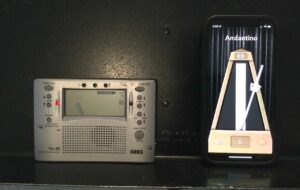
Last week I discussed the basic equipment you need to take care of your saxophone and clarinet. This week, I give you some equipment and tools that will support your playing and grow your musical skills.
Part 2 of Sax and Clarinet Starter Gear
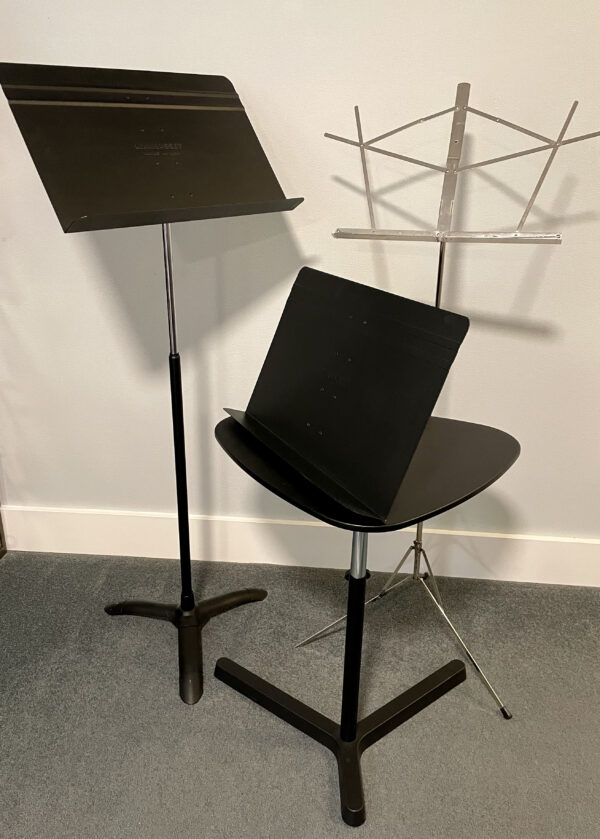
You’ve got the basics: cork grease, cleaning swabs, reeds, and for saxophonists, a neck strap or harness. What tools or equipment would support you on the next leg of your musical journey?
Music Stand and Instrument Stand
While neither one of these are required, they sure are a great support; literally!
Music stands come in all sorts of forms; free-standing, foldable, or desktop.
In the photo on the right are three different models of music stands. I’ve used all of these at one time or another. The desktop is handy when space is limited or even when traveling. After setting it up on your desk or dining table, pull up a chair and get to practicing.
Of course the foldable stand is great for traveling, especially when you’ve got to carry all your own gear. However, because of its flimsy structure, it doesn’t hold much music and can blow over in a strong wind.
These are not the only styles available. Hercules, Petersen, and Proline all make some variation of the foldable music stand and they all seem quite sturdy. The black Manhasset is the standard in many band rooms and orchestras.
Instrument stands are much more diverse in design, durability, and function.
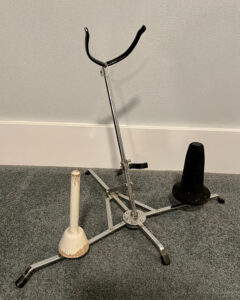

When I was in high school, I used a metal, foldable sax/clarinet stand. Later I added a special straight soprano sax peg. It is very durable and has lasted a long time. The small swivel catch on the lower part of the stand is adjustable to hold either an alto or tenor. It folds up very compactly.
I upgraded to a dual sax stand once I had both alto and tenor saxes. This sturdy stand by Belmonte also has holes to attach pegs of clarinets or flutes or even my straight soprano.
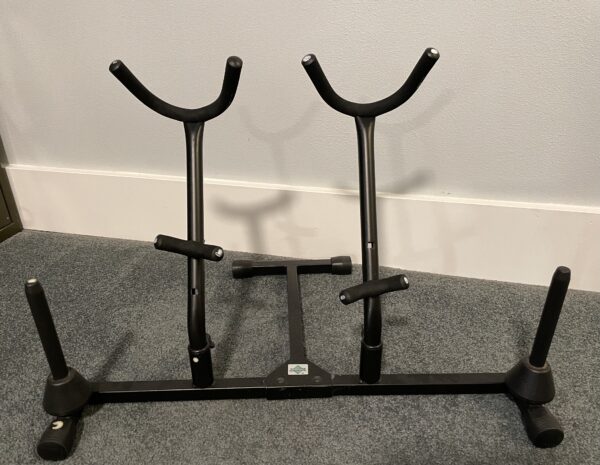
When I saw a saxophonist (who was it? I don’t remember!) using a sax stand that looked as if the sax was floating in mid-air, I had to check it out. Sax-Rax was a British company that made this uniquely designed and strong sax holder. Sax-Rax has been acquired from the founder and operations have been relocated to the United States. I love my Sax-Rax stand! It is very strong. I never worry about the safety of my horns being held by the “bull horns” design grip.
Stand-alone clarinet stands are very portable and compact. Check out these two models both made by K&M. The design on the left has legs that fold up to lay against the center peg. The other design has legs that unscrew from the peg base and fold up to fit inside the peg. Pretty clever, actually. Both are stable and durable models.

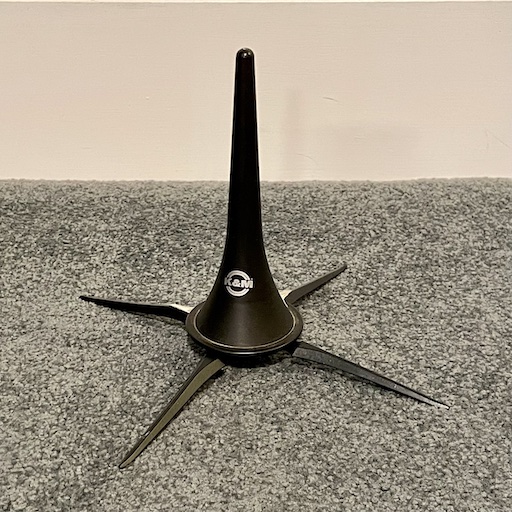
Tuners and Metronomes
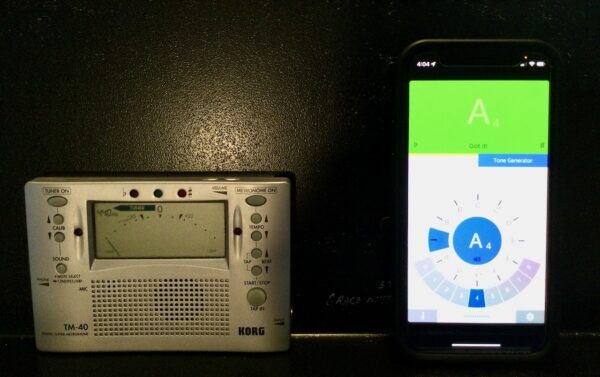
Now that your sheet music and your instrument(s) are supported, how about supporting your sound with a good tuner. Then a metronome to teach you steadiness in pulse.
Set your tuner to play a true pitch and then you match it on your horn. Use your ears to match the pitch! Yes, most tuners also provide a visual display to let you know when you are in tune or not, but don’t rely on your eyes to tune up. Use your ears!
Play the tuning note on your tuner, then play the corresponding pitch on your instrument. Remember that both saxophone and clarinet are transposing instruments. You need to transpose the concert pitch tuning note to either Bb or Eb.
In the photo above, both tuners are displaying and playing a concert A. For Bb clarinetists, play a “B” on the third line of the staff. Bb tenor saxophonists play a “B” one ledger line and a space above the staff. Eb alto saxophonists play F# on the top line of the treble staff.
Steady as she goes
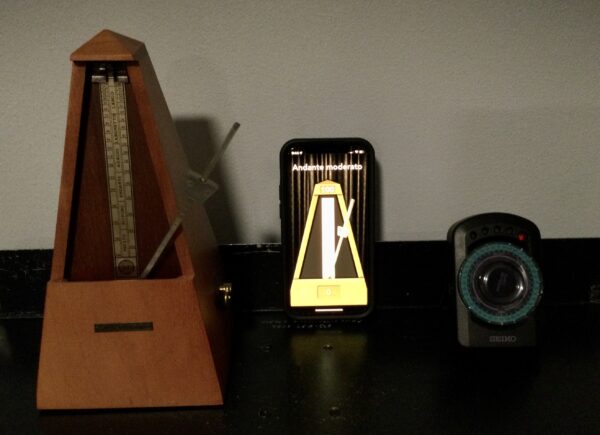
Metronomes teach you to keep a steady pulse. With regular use, your body learns to keep a variety of tempi and feel the music more naturally.
A good metronome will have options for pulsing 3 or 4 beats to a measure at minimum. The Korg metronome/tuner combo pictured above will count up to 7 beats per measure as well as play triplets, eighth notes, sixteenth notes and various uneven triplet and eighth note patterns. Pulses run from the low of about 48 beats per minute up to about 208 bpm.
I should also mention some online metronomes and tuners. Here’s two free metronome options that I’ve found. Since they are free, both pages sport ads. Metronome Online and Online Metronome. I didn’t find any web-based tuners that were easy to use. The best ones online are apps to download to your tablet or smart phone.
Tools
All the devices mentioned in this article are tools to help you with your playing and practicing. And as with all tools, the benefit only comes when you use them. I hope this article has made you aware of some helpful gadgets.
Take the next step in your musical education with some good quality tools and watch your skills grow.






